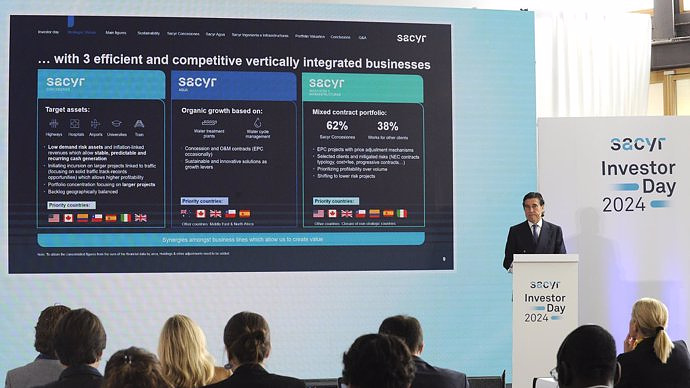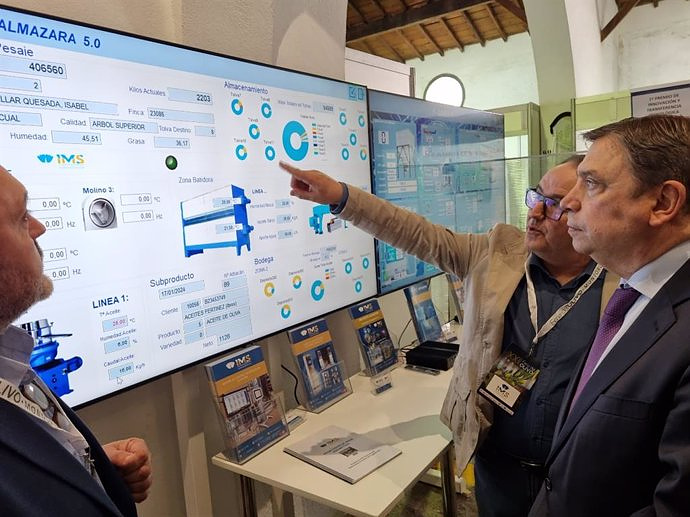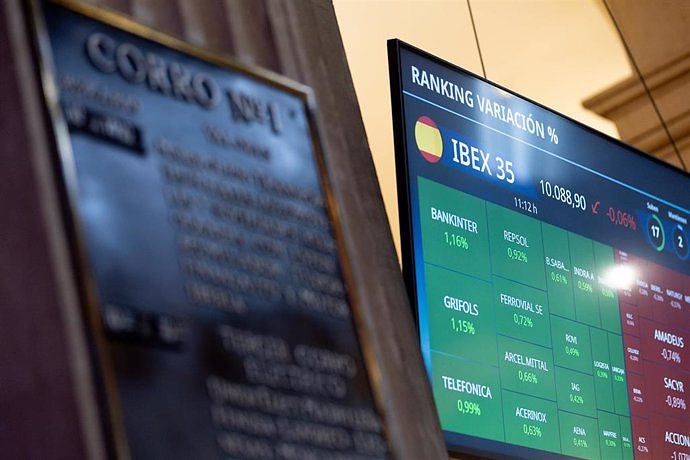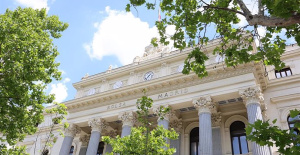It points to 'Jon', 'Txapote' and 'Olga' as direct managers of the command that committed the attack
MADRID, 28 Nov. (EUROPA PRESS) -
The Civil Guard has issued a report identifying nine former ETA leaders --Ignacio Gracia, alias 'Iñaki de Rentería'; Mikel Albisu, 'Mikel Antza'; Javier García Gaztelu, 'Txapote'; Juan Antonio Olarra, 'Jon'; Asier Oyarzabal, 'Baltza'; Vicente Goicoechea, 'Willy'; Ramón Sagarzazu, 'Ramuntxo'; María Soledad Iparraguire, 'Anboto'; and Ainhoa Múgica, 'Olga'-- as members of the terrorist leadership that gave the "timely orders" to kill Judge Francisco Querol and two other people on October 30, 2000 in Madrid.
In this report of November 18, to which Europa Press has had access, the Benemérita informs the head of the Central Court of Instruction Number 5, Santiago Pedraz, of the composition of the executive committee of ETA or zuba when the attack took place.
Throughout 307 pages, the Armed Institute places these nine former ETA chiefs as members of its "highest management body" at that time who "would have participated in the design, management, monitoring, media facilitation and delivery of the opportune orders for the materialization of the terrorist action".
An attack that the Civil Guard frames in the new strategy agreed in 1997 "in a collegiate manner" by the ETA leadership to initiate a series of attacks against judges, magistrates and prosecutors, after the fall in 1992 of the ETA leadership in Bidart (France ).
In the case of 'Iñaki de Rentería', the investigators have no doubt that, since the Bidart coup, he began to "exercise functions of responsibility related to both ETA's military apparatus and its logistical apparatus, tasks that he continued to perform until the time of his arrest in September 2000, barely a month before the attack".
Regarding 'Baltza', the Benemérita says that she went from being a "lieutenant" of 'Anboto' and 'Iñaki de Rentería', having "direct responsibility for some 'legal' commandos", which she directed, armed and gave "courses", to replace the latter at the head of the logistics apparatus when he was captured. Oyarzabal was not arrested until September 23, 2001.
De 'Willy', arrested on October 5, 2001, affirms that already in 1994 "he was part of the ETA organization chart, initially acting as the person in charge of its counterfeiting apparatus, and later on, he began to exercise responsibility tasks within of the political apparatus under the orders of 'Mikel Antza'".
The Civil Guard says of 'Anboto' that from 1994 until 1998, when it was replaced by 'Txapote', "it began to carry out the highest responsibility at the head of the 'legal' commandos". Later she would have taken care of ETA's "accounting", including the "money from extortion", and the management of some zulos. Finally, she was arrested on October 3, 2004 together with 'Mikel Antza'.
The report explains about the latter that, "as a consequence of the continuous police operations carried out against the leadership structures of ETA", 'Mikel Antza' "was acquiring greater responsibilities in the terrorist organization until he became the highest director of the political apparatus of the itself, and, therefore, form part of its executive committee from mid-1994".
Regarding 'Txapote', the Armed Institute asserts that "since the arrest of the previous head of the military apparatus, José Javier Arizcuren ('Kantauri'), on March 9, 1999, until the date of his own arrest, on February 22, 2001, that is, for three years, he was a member of the executive committee" as head of said apparatus.
After the capture of 'Txapote', the investigators outline 'Jon' as the new "top manager of the ETA military apparatus, together with his sentimental partner, Ainhoa Múgica, being the people in charge of transmitting to the action commandos established in Spain orders to commit terrorist actions".
Lastly, de 'Ramuntxo' recounts that "in 1994, after discovering his integration into the terrorist organization, he fled to France, joining the so-called 'reserve taldes', later moving to Venezuela" and coming to direct the "international apparatus of ETA" until his arrest in 2005.
To configure this zuba, the Civil Guard relies on different evidence ranging from photographic recognition and police statements made by other ETA militants, to identify their former bosses, to documentation seized in various operations in Spain and France.
For example, a handwritten letter by 'Iñaki de Rentería' in 1993 to make an "organic appointment" between two members of ETA stands out. Signed by 'Gorosti', another of his aliases, it indicates the day and time of a meeting in Toulouse detailing that the "password" will be to carry "Le Monde Diplomatique" and "a package of Malboro".
In addition, he refers that some of his letters were signed with the word 'erakundea', which means "the organization", from which "it can be inferred" that "Iñaki de Rentería" "was carrying out managerial tasks within ETA".
The Armed Institute also draws attention to "a blog of notes from the Carrefour brand that contains handwritten notes with names and amounts", a kind of "summary-balance of accounts referring to certain aliases of militants of the logistics apparatus" that 'Baltza carried '.
Likewise, it alludes to the "zubatto", the meeting minutes of the zuba, differentiating between these and "the documents that contain their conclusions" because, "while the former are of a more restricted nature and of greater breadth and clarity, since they only members of the leadership can have them, the latter have a more public nature", since "they are periodically disseminated to the different apparatuses of the terrorist band".
Among the statements made by ETA members after their arrest, there is one dated January 3, 2000 where it is stated that 'Txapote' had ordered that, when the 'ekintzas' began, they should be directed in a special way against the members of the Forces and Corps of State Security" and politicians from the Basque PP and PSOE.
"That he also told them that judges, magistrates and lawyers considered enemies of the 'national construction process for Euskal Herria' would be preferential targets of terrorist actions, as well as businessmen" with "political ties" and who did not pay the "revolutionary tax" , he stated.
La Benemérita also reports to Pedraz on the "flow of communication" between the 'Comando Buruahuste', materially responsible for this crime, and the former ETA chiefs mentioned, especially 'Jon', 'Txapote' and 'Ainhoa' as directly responsible of the same.
"The command reported directly to the leadership of ETA in France, whose members gave it the guidelines to follow at all times, marked the potential targets, provided information about them, and provided the weapons and material," he says. the civil Guard.
Although the report specifies that these three ETA leaders came to meet with the command in a safe house in France, it alludes to two other forms of communication. The "most common", through ETA militants who acted as a "liaison" and delivered information and, sometimes, material. And, a "newer" one, through 'emails' sent from "public establishments".
Specifically, it maintains that days before the murder of the magistrate of the TS, through a 'link', the members of the command received the order to travel to France, (...) where they would have received a visit from those responsible "for ' comment on the various events of his campaign in Madrid', it being highly probable that one of the topics to be discussed was the attack on Querol".

 Exploring Cardano: Inner Workings and Advantages of this Cryptocurrency
Exploring Cardano: Inner Workings and Advantages of this Cryptocurrency Seville.- Economy.- Innova.- STSA inaugurates its new painting and sealing hangar in San Pablo, for 18 million
Seville.- Economy.- Innova.- STSA inaugurates its new painting and sealing hangar in San Pablo, for 18 million Innova.- More than 300 volunteers join the Andalucía Compromiso Digital network in one month to facilitate access to ICT
Innova.- More than 300 volunteers join the Andalucía Compromiso Digital network in one month to facilitate access to ICT Innova.-AMP.- Ayesa acquires 51% of Sadiel, which will create new technological engineering products and expand markets
Innova.-AMP.- Ayesa acquires 51% of Sadiel, which will create new technological engineering products and expand markets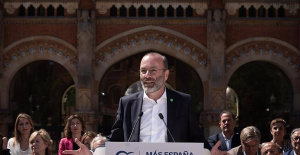 Weber (PPE) asks to vote for the PP in the European elections to "defend the rule of law" in Spain
Weber (PPE) asks to vote for the PP in the European elections to "defend the rule of law" in Spain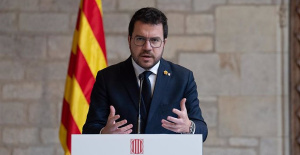 Aragonès warns that "an incoherent agreement" in Catalonia would "difficult the collaboration" of ERC with the Government
Aragonès warns that "an incoherent agreement" in Catalonia would "difficult the collaboration" of ERC with the Government The attorney general justifies the recusal of TS magistrates and vindicates his "right" to defend himself
The attorney general justifies the recusal of TS magistrates and vindicates his "right" to defend himself Joselu allows him to dream about the 'Fifteenth'
Joselu allows him to dream about the 'Fifteenth' How Blockchain in being used to shape the future
How Blockchain in being used to shape the future Not just BTC and ETH: Here Are Some More Interesting Coins Worth Focusing on
Not just BTC and ETH: Here Are Some More Interesting Coins Worth Focusing on Expociència expects to receive more than 4,000 visitors in the Science Park of the University of Valencia
Expociència expects to receive more than 4,000 visitors in the Science Park of the University of Valencia They develop devices for the precise diagnosis of cancer patients
They develop devices for the precise diagnosis of cancer patients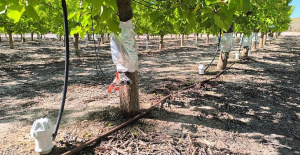 UMH researchers are working on a high-quality apricot crop that requires less irrigation water
UMH researchers are working on a high-quality apricot crop that requires less irrigation water The UPV develops an application to improve the quality of life of patients with glioblastoma
The UPV develops an application to improve the quality of life of patients with glioblastoma A million people demonstrate in France against Macron's pension reform
A million people demonstrate in France against Macron's pension reform Russia launches several missiles against "critical infrastructure" in the city of Zaporizhia
Russia launches several missiles against "critical infrastructure" in the city of Zaporizhia A "procession" remembers the dead of the Calabria shipwreck as bodies continue to wash up on the shore
A "procession" remembers the dead of the Calabria shipwreck as bodies continue to wash up on the shore Prison sentences handed down for three prominent Hong Kong pro-democracy activists
Prison sentences handed down for three prominent Hong Kong pro-democracy activists ETH continues to leave trading platforms, Ethereum balance on exchanges lowest in 3 years
ETH continues to leave trading platforms, Ethereum balance on exchanges lowest in 3 years Investors invest $450 million in Consensys, Ethereum incubator now valued at $7 billion
Investors invest $450 million in Consensys, Ethereum incubator now valued at $7 billion Alchemy Integrates Ethereum L2 Product Starknet to Enhance Web3 Scalability at a Price 100x Lower Than L1 Fees
Alchemy Integrates Ethereum L2 Product Starknet to Enhance Web3 Scalability at a Price 100x Lower Than L1 Fees Mining Report: Bitcoin's Electricity Consumption Declines by 25% in Q1 2022
Mining Report: Bitcoin's Electricity Consumption Declines by 25% in Q1 2022 Oil-to-Bitcoin Mining Firm Crusoe Energy Systems Raised $505 Million
Oil-to-Bitcoin Mining Firm Crusoe Energy Systems Raised $505 Million Microbt reveals the latest Bitcoin mining rigs -- Machines produce up to 126 TH/s with custom 5nm chip design
Microbt reveals the latest Bitcoin mining rigs -- Machines produce up to 126 TH/s with custom 5nm chip design Bitcoin's Mining Difficulty Hits a Lifetime High, With More Than 90% of BTC Supply Issued
Bitcoin's Mining Difficulty Hits a Lifetime High, With More Than 90% of BTC Supply Issued The Biggest Movers are Near, EOS, and RUNE during Friday's Selloff
The Biggest Movers are Near, EOS, and RUNE during Friday's Selloff Global Markets Spooked by a Hawkish Fed and Covid, Stocks and Crypto Gain After Musk Buys Twitter
Global Markets Spooked by a Hawkish Fed and Covid, Stocks and Crypto Gain After Musk Buys Twitter Bitso to offset carbon emissions from the Trading Platform's ERC20, ETH, and BTC Transactions
Bitso to offset carbon emissions from the Trading Platform's ERC20, ETH, and BTC Transactions Draftkings Announces 2022 College Hoops NFT Selection for March Madness
Draftkings Announces 2022 College Hoops NFT Selection for March Madness

